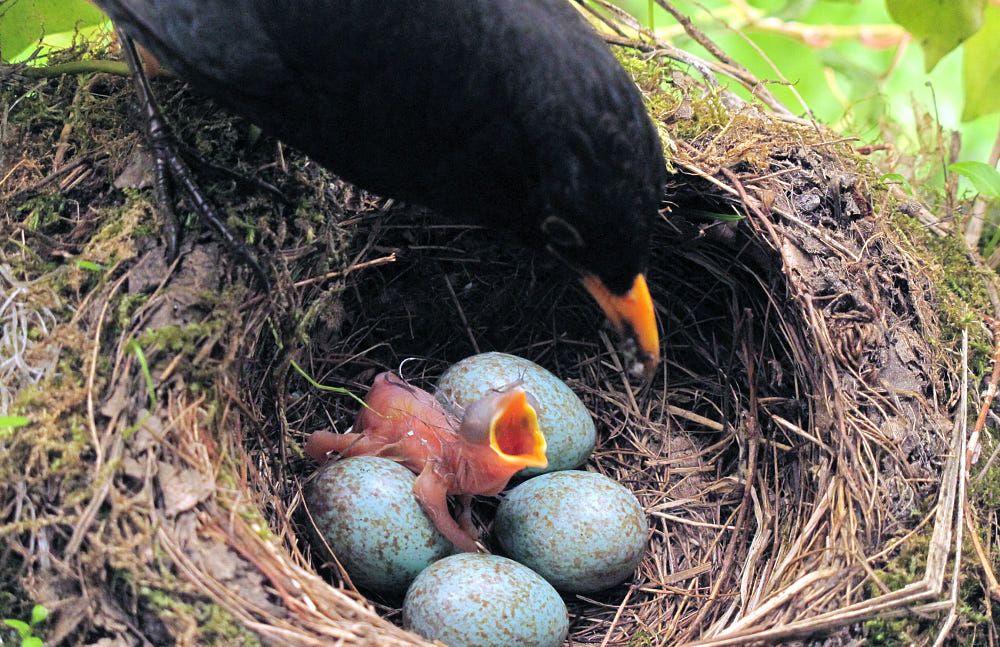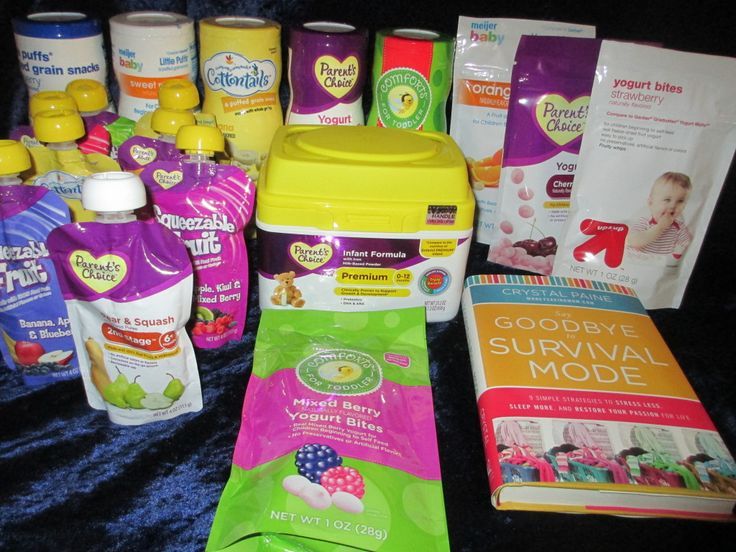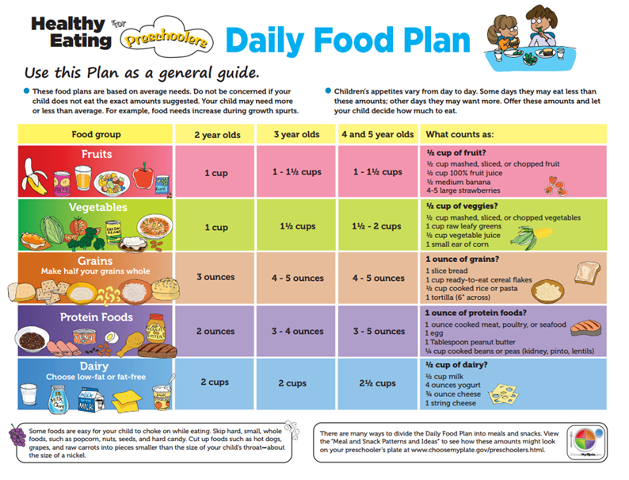What do you feed baby blackbirds
How to Teach Fledgling Blackbirds to Eat
By Deborah Whistler | Updated September 26, 2017Things You'll Need
Dry dog food
Meal worms
Earth Worms
Large cage
Perches
Tweezers
Food and water bowls
Millet spray
Popcorn
Bread crumbs
Outdoor light
Fledgling blackbirds can require care if they can’t fly and are abandoned by their parents. Before you rescue a fledgling bird, be sure it is indeed in need of help. Stand back and keep an eye on the baby bird to see if the parents return to feed it. Often, a fledgling is just having difficulty learning to fly and its parents will continue to care for it when it’s out of the nest. Caring for a baby bird is a full-time job and often not a successful undertaking. Being handled by humans is extremely stressful for baby birds and they require feeding every half hour or so during daylight hours to survive. If the parents don’t show, you can try certain measures to help the fledgling and get it to eat until it can fly and be released.
Place the fledgling blackbird in a large cage with perches. The baby is learning to fly and can damage its wings and injure itself if confined in too small a cage. The cage should be large enough for the bird to practice flying without hitting its wings on the sides of the cage. Line the bottom of the cage with newspaper and clean it daily. Keep the cage somewhere protected outside so the bird can hear the calls of other wild birds.
Handle the baby bird as little as possible.This will help it stay wild and not imprint on you.
Offer the baby bird moistened dry dog food in a bowl. See if the bird attempts to eat the food. Live meal worms or earth worms can also be offered, as well as millet spray, popped corn and bread crumbs. Also provide a bowl of water for the bird to drink. If the bird isn’t eating or drinking, you will have to hand feed it until it will eat on its own.
Hand feed the fledgling. Soak dry dog food in warm water. Use tweezers to pick up a small amount at a time. Tap the end of the tweezers on the side of the bird’s beak. This should trigger the baby to open its mouth. Place the food in its mouth and it will then close its beak and swallow. The bird should continue to open its mouth for more food. Feed it small amounts every half hour during daylight hours. Handle the bird as little as possible in this process.
Keep offering live food. While hand feeding the baby blackbird, continue to provide the moistened dry dog food in a bowl that it can eat by itself and offer live meal worms or earth worms by hand. Start with small worms or worm pieces. Live food will encourage the bird to try to eat on its own and prepare it for release.
Place the cage close to a light outside to attract bugs. As bugs fly around the light, the baby bird will begin to catch and eat them. This is a critical step to prepare it for release.
Release the bird. Once the bird is eating and catching food on its own, open the cage door. Continue to provide food, but give the bird access to freedom. Don’t force the bird out of the cage. It can sometimes take a while before it ventures out. And the baby may return to the cage to eat for a week or even more. Continue to provide food and water for the bird until it quits returning to the cage.
Once the bird is eating and catching food on its own, open the cage door. Continue to provide food, but give the bird access to freedom. Don’t force the bird out of the cage. It can sometimes take a while before it ventures out. And the baby may return to the cage to eat for a week or even more. Continue to provide food and water for the bird until it quits returning to the cage.
Warnings
Only attempt to rescue a fledgling bird if you are sure it isn't being fed by its parents. Often the fledgling, if left alone, will soon learn to fly off and its parents will continue to feed it if you don't interfere. Wild birds do much better on their own and many times baby birds will die when caged.
References
- Parrot Passion: Orpaned Wild Baby Birds
- Wild Bird Watching: Baby Birds - Should I Help?
- Wildlife In Crisis: Primary Care for Young Birds
Photo Credits
Baby Blackbirds: All You Need To Know (With Pictures)
What does a baby blackbird look like?
How big are baby blackbirds?
How much do baby blackbirds weigh?
What do juvenile blackbirds look like?
What is a baby blackbird called?
What do baby blackbirds eat?
Do both parents feed baby blackbirds?
How do blackbirds feed their chicks?
What do blackbird eggs look like?
How long do blackbird eggs take to hatch?
How many babies does a blackbird have?
When do blackbirds lay eggs?
How long do baby blackbirds stay with their parents?
The term ‘blackbird’ has become a general term for many predominantly black thrush-like birds.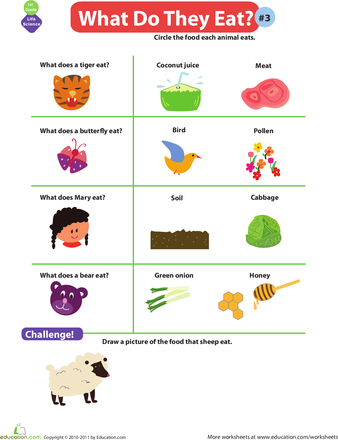 However, when we talk about blackbirds, the bird that springs to mind is likely the Common blackbird, a species of true thrush from the Turdidae family. There are many similar looking blackbirds in the Icteridae family, including the common North American Red-winged blackbird, but they’re barely related to their European counterparts!
However, when we talk about blackbirds, the bird that springs to mind is likely the Common blackbird, a species of true thrush from the Turdidae family. There are many similar looking blackbirds in the Icteridae family, including the common North American Red-winged blackbird, but they’re barely related to their European counterparts!
Blackbirds are a common garden bird throughout much of the world, but what about baby blackbirds? This is a guide to baby blackbirds. Of course, there will be plenty of pictures of baby blackbirds along the way!
What does a baby blackbird look like?
At birth
Baby blackbirds are born altricial and naked with spare tufts of downy feathers. The birds are blind and tiny, measuring just a few centimetres long. They’re capable of squirming but can’t shuffle around the nest for a couple of days at least. Baby blackbirds have gaping yellow mouths, which they present to their parents to feed.
Recently hatched blackbird chick in the nest
Three young blackbird chicks
Growth and development
Baby blackbirds grow exceptionally quickly, obtaining around 50 to 60% of their adult body weight in the first ten days. Fluffy, downy feathers begin to grow after a couple of days, giving a 7-day-old nestling blackbird a somewhat round or rotund appearance.
Fluffy, downy feathers begin to grow after a couple of days, giving a 7-day-old nestling blackbird a somewhat round or rotund appearance.
After 12 to 14 days, the chicks are ready to fledge, but they can feasibly survive outside of the nest after just nine days. Blackbirds remain juveniles for some eight months and will usually breed in the forthcoming breeding season.
How big are baby blackbirds?
Baby blackbirds are tiny, measuring just a few centimetres long, and they weigh just 2 to 4 grams.
Like most songbirds, baby blackbirds are born altricial, meaning they’re totally blind and are largely undeveloped. Hatchling birds require constant attention and can barely thermoregulate for 2 to 3 days. But, of course, young blackbirds grow extremely quickly, and by the time it comes to fledge, baby blackbirds obtain some 50 to 60% of their adult body weight.
Hungry blackbird chicks in the nest
How much do baby blackbirds weigh?
Baby blackbirds weigh around 2. 75 to 3.25g at birth, which is less than a 5p piece.
75 to 3.25g at birth, which is less than a 5p piece.
At birth, nestlings weigh less than 5% of their adult weight, which is around 100g. Baby blackbirds grow rapidly, and reach approximately 3/4 of their adult weight before fledging.
What do juvenile blackbirds look like?
Juvenile blackbirds are a medium-light, speckled brown with a reddish tinge to their breast and undersides. They’re easy to confuse with many other juvenile songbird juveniles.
Moreover, both the male and female look similar for the first eight months or so, until the males moult their juvenile brown plumage and replace it with black plumage. Female adult blackbirds can be hard to tell apart from juveniles as they share similar red-brown plumage.
Juvenile blackbirds are rounder and puffier than adults. Their downy feathers are gradually replaced over the course of 6 to 10 months.
Juvenile Blackbird
What is a baby blackbird called?
There’s no specific name for a baby blackbird. Like most baby birds, baby blackbirds are generally referred to simply as chicks.
Like most baby birds, baby blackbirds are generally referred to simply as chicks.
Like with other birds, there are also different names for different stages of the young blackbird’s development. Immediately after hatching, a baby blackbird is called a hatchling.
While baby blackbirds remain in the nest, they’re called nestlings. Once they leave the nest, they’re called fledglings. Finally, baby blackbirds become juveniles and then adult birds.
What do baby blackbirds eat?
Baby blackbirds eat what foods their parents bring them, which are almost exclusively soft invertebrates, insects and arthropods. While blackbirds are omnivores, young birds are unable to digest most seeds and berries until they fledge. Insects provide the high-fat, high-energy diet the young birds need to grow.
Parents feed the young a variety of worms, beetles, grasshoppers, flies and spiders, which are sometimes partially regurgitated and inserted into the chicks’ gaping mouths. The parents feed the chicks multiple times an hour for most of the day.
The parents feed the chicks multiple times an hour for most of the day.
Female Blackbird feeding chicks a worm in the nest
Do both parents feed baby blackbirds?
Both the male and female blackbirds feed the young birds. In some situations, the female will feed more, and in others, the male will take over most of the feeding duties. This seems to vary from region to region and nest to nest.
Once the chicks fledge, the male will continue to feed them for another two to three weeks or so if possible, while the female prepares for the next brood. Blackbird pair bonds are strong and often last for life.
How do blackbirds feed their chicks?
Adult blackbirds feed their chicks by dropping whole foods into the youngs’ gaping mouths.
Arthropods and invertebrates make up most of the chick’s diet for the first week or so at least. The parents may partially regurgitate some foods into the chicks’ mouths.
Soft insects and invertebrates like worms are essential in the breeding season - these easily digestible foods are full of nutritious fat and energy.
Male Blackbird looking after the chicks
What do blackbird eggs look like?
Blackbird eggs are pale-green or blue, with large brown-to-red speckles which cover most of the surface. They measure approximately 29 x 22mm.
Blackbird eggs in the nest
How long do blackbird eggs take to hatch?
Blackbird eggs are incubated for roughly 13 to 14 days on average, though longer incubations of 19 days have been observed in colder regions.
In the UK, the average incubation time is 13 to 14 days. It’s a similar story for most North American blackbirds - the average incubation time for Red-wing blackbirds is also around 13 days. The female usually incubates the eggs as the male guards the nest, but male incubation is occasionally observed too.
How many babies does a blackbird have?
A blackbird’s average clutch of eggs numbers 3 to 5 eggs, with higher numbers being laid in woodland habitats by older individuals.
Blackbird clutches wouldn’t be large enough to keep their population stable if they raised just one brood per year, hence why female blackbirds usually lay at least two clutches of eggs a year, if not three or even four!
Blackbirds live short lives, and they’ve learned to breed and nest quickly to keep their populations high. Over 50% of nests fail in some regions, so blackbirds must try, try again if they don’t first succeed!
Over 50% of nests fail in some regions, so blackbirds must try, try again if they don’t first succeed!
A fledgling common blackbird calling to be fed
When do blackbirds lay eggs?
In the UK, blackbirds lay eggs in the traditional spring breeding season, which runs from March until July.
Depending on the weather, most blackbirds will wait until April to lay their first clutch. Subsequent clutches are laid through May, June and July. Rarely, blackbirds may lay a late clutch in August.
In North America, the breeding season is pretty much the same as it is in the UK. Blackbirds in Canada and the northernmost US states typically wait until late April or May, whereas those distributed further south often breed earlier.
Eurasian Blackbird feeding a recently fledged chick a strawberry
How long do baby blackbirds stay with their parents?
Baby blackbirds leave the nest to fledge after around 12 to 14 days, but may leave sooner, after just nine days. This is only likely if the nest is disturbed.
This is only likely if the nest is disturbed.
After fledging, the young birds usually shuffle their way to a nearby branch or bush, where they’ll remain for another week or so until they can fly confidently. Parental feeding can continue for as long as three weeks in some situations. During this time, the young blackbirds are often seen chasing after their parents and begging for food.
Expert Q + A
Ask a question
Do you have a question about this topic that we haven't answered? Submit it below, and one of our experts will answer as soon as they can.
How to feed a thrush chick?
Hello! My name is Svetlana. It so happened that last night on the playground I won a thrush chick from the kids. These offspring found a chick on the site, they could not say the exact place, it is only known that there were two chicks, one died with the second they were running around like a hand-written sack. I tried to send him to the Scriabin Veterinary Academy (fortunately we live nearby), but they said: “Sorry, we can’t accept. We don't have shelter! So this chick ended up at our house. nine0003
We don't have shelter! So this chick ended up at our house. nine0003
I had to google and ask Yandex what and how. First... There are a lot of cats in our district, so the question of leaving a bird on the street was dismissed immediately, and even these kids, in general, this is definitely death for a bird.
General information is clear, but questions remain.
Settled temporarily in a cat carrier (plastic). Last night they fed the bird with a mass of boiled hard-boiled eggs with water and bread crumbs (two-day bread), gave food from a syringe. Spent the night well. Today he began to chirp at about six in the morning, again fed from a syringe, baby meat puree with water and corn porridge. Shredded carrots. Then we quickly went to the veterinary store and bought food for insectivorous birds ‘padovanes’, flour worms and maggots. It bursts on both cheeks 🙂 I give worms and maggots with tweezers right into the beak, with food it is more difficult to mix it with water and the same corn baby gruel in order to roll up something similar to worms.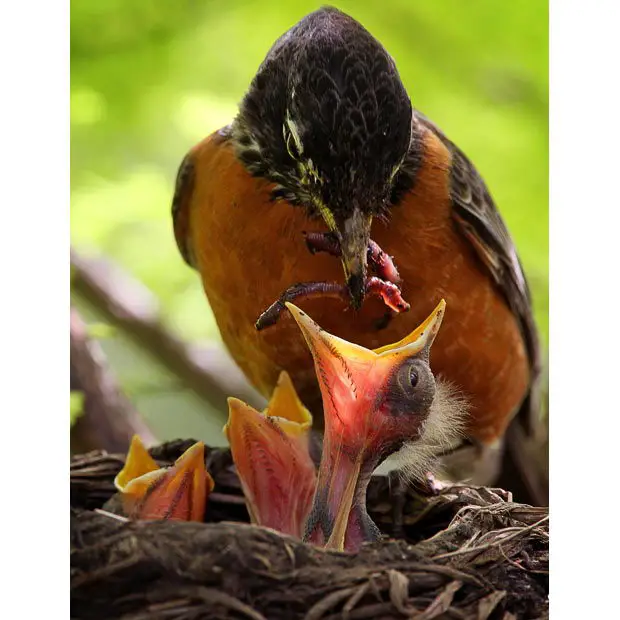 Swallows with pleasure. nine0003
Swallows with pleasure. nine0003
More questions.
One. Today, some kind of flakes are falling from the feathers of the bird, they look like dandruff, what should I do about it? Is it possible to process a bird with something ?, we have children in our apartment. Some kind of powder, or miramistin, or something that won't harm the bird.
Two. While Google was reading about a similar situation, there the girl of the thrush was fattened with antibiotics (ciprofloxacin), enterol and hilak forts, but they had a bird that was injured. In our case, is it advisable to give antibiotics? And also, is it necessary to give immunofan or foskrenil? Even today, the chick has on its beak, more precisely along the edges, as if it was traumatized or something, how to process it? nine0003
Three. How often should you feed? Feed at night? Do birds need to be given water? How to teach self-feeding. Because, apparently, the bird will stay at home. And is it even worth it? Or still entrust ornithologists with this concern? True, it seems to me that the bird has already got used to me. 🙁
🙁
I'll add photos of a bird to the paperclip when they brought home and today's one with dandruff and an injured beak.
Good afternoon!
First, let's talk about mistakes - you should not feed thrush chicks with bread and porridge. So you can eventually kill the bird. If there are no ticks, then you don’t need to process it, but the fact that the feather grows and covers from feathers falls from it is okay, it’s physiological. You can feed with a mixture for insectivorous birds and crickets, cockroaches and mealworms (a little of it). A mixture for insectivorous birds can be made by yourself - this is a hard-boiled egg, grated carrots, cottage cheese, hamarus .. Of the preparations, immunim is best suited, which is drunk with water (literally drop by drop). As for the feeding regimen, feed as requested, and of course you don’t need to feed at night - the chicks also sleep at night ...
Yours faithfully, the chief veterinarian of the bird hospital PhD Romanov VV
What and how to feed a thrush chick.
 What does a thrush chick look like (photo)? How to feed a thrush chick? Thrush chick fell out of the nest 01/20/2020
What does a thrush chick look like (photo)? How to feed a thrush chick? Thrush chick fell out of the nest 01/20/2020 A genus of birds of the thrush family of the passerine order. 62 species. Body length 20-25 centimeters.
They move on the ground by jumping while crouching. Thrushes are common in Europe, Asia and America; brought to New Zealand. For the winter, northern species of thrushes fly south, gathering in large flocks. nine0003
Breeds alone or in small colonies in trees, bushes or on the ground; nests are massive, often with earth or clay in the walls. Over the summer, thrushes give 1-2 clutches, each with 3 to 7 eggs. They feed on insects, spiders, worms, mollusks, berries, and often feed on the ground.
This name combines a fairly large number of bird species from the thrush family. Over 60 species, distributed everywhere, most widely in Eurasia and America.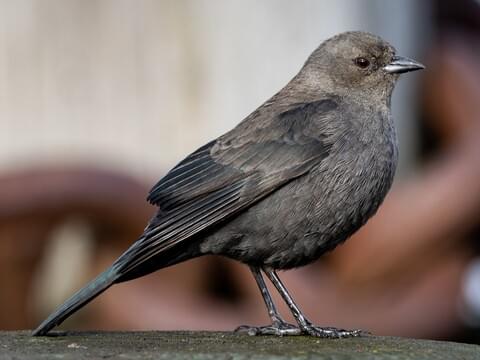 There are 15 species of thrushes in Russia. They inhabit almost all continents and climatic zones of the Earth, with the exception of the subarctic ones. Representatives of this family can be found mainly in forests, flat or mountainous, only some species (for example, African thrush - in the savannah, brown - in the tundra) can live in open spaces. nine0003
There are 15 species of thrushes in Russia. They inhabit almost all continents and climatic zones of the Earth, with the exception of the subarctic ones. Representatives of this family can be found mainly in forests, flat or mountainous, only some species (for example, African thrush - in the savannah, brown - in the tundra) can live in open spaces. nine0003
Thrushes successfully master the suburbs, settling in parks, squares, salakhs. In the summer, birds feed mainly on insects and invertebrates, sometimes they hunt larger prey - small reptiles and amphibians. During the ripening season of berries and fruits, thrushes move on them, often posing a serious threat to the crop.
In central Russia, thrushes, united in rather large flocks, can pick strawberry beds, cherry trees, sea buckthorn, and currants. They peck at apples, pears, plums, choosing the already "ripe", the sweetest places of fruit. But in the summer, destroying pests of forests, orchards and orchards, thrushes bring undoubted benefits. nine0003
nine0003
Most of these birds are excellent singers. Thrushes nest in trees, although they spend a significant part of their lives looking for food in the forest floor. Thrushes not only fly well, but also run fast, or rather, jump on the ground. Nests in birds are cup-shaped, made of small branches, fastened with clay or mud with the help of sticky saliva of birds. In most species of thrush, only the female takes part in the construction of the nest, but both parents feed the chicks. Clutches usually contain 4 to 7 eggs. nine0003
Thrushes are distrustful and shy birds. They should be kept in large (70X30X40 cm) wooden cages with bamboo rods and deep (for easy cleaning) pallets. It is better to give food and water to thrushes in hanging feeders and bathing places. These birds need regular bathing and sunlight. From spring to late autumn, cages with thrushes are best kept on the balcony, but in hot weather, part of the cage should be shaded.
Thrushes are quite voracious, but they are easier to feed than small insectivorous birds. They willingly eat not only the usual food of thin-billed birds, but also berries of mountain ash, elderberry, derain, bird cherry, horticultural crops, apples, earthworms, slugs and naked caterpillars. nine0003
They willingly eat not only the usual food of thin-billed birds, but also berries of mountain ash, elderberry, derain, bird cherry, horticultural crops, apples, earthworms, slugs and naked caterpillars. nine0003
Give the thrushes a mixture for insectivorous birds. This mixture is made from grated carrots (medium grater for cheese) with the addition of breadcrumbs, cottage cheese, crushed sunflower seeds, hamarus, crushed hemp, chopped or grated hard-boiled chicken eggs, dry or better fresh ant pupae. The ratio of these components is determined by the species and individual characteristics of pets. Carrots should make up about half of the mixture by volume, then the dry ingredients, absorbing carrot juice, become more attractive to birds. nine0003
Mixtures are made to a friable consistency, crumbly so that it does not stick to hands and beaks. A substitute for carrots can be turnips or dandelion greens scrolled through a meat grinder. It is useful to add the latter to the mixture a little, and in winter replace it with a pinch of herbal flour.
The biggest problem with keeping thrushes in captivity is their large size. Because of it, they need more space and food than almost all other songbirds. These birds are more suitable for captive keeping. As a rule, thrushes are bred for their beautiful singing, so the most popular species are songbirds and blackbirds. Thrushes are migratory birds, but relatively painlessly withstand negative temperatures and do not need additional lighting in winter. nine0003
Thrushes are representatives of passerine birds. They have characteristic distinguishing features from other species. Thrushes have a peculiar character and way of life, they have their own habitat, in which they prefer to nest and raise offspring. There are a huge variety of species of thrushes, each of which lives in different parts of the world.
Description of thrushes
Thrushes are the most common nomadic bird species . They prefer to live on some plots of land in the warm season, and fly to more comfortable living conditions in winter. They can be found in every corner of the planet. nine0003
They can be found in every corner of the planet. nine0003
Appearance
Thrushes have small body sizes, which vary in length from 18 to 28 cm. Their thin wingspan is 35-40 cm. But the weight category of birds is completely different and depends on the species. Some birds can barely reach a body weight of 40 g, while others can hang all 100 g. The eyes are set on the sides of the head, so when looking for food they have to tilt their heads to one side. Thrushes can be distinguished from other winged birds by their characteristic external features.
They have a very short gray or yellow beak with open nostrils and discreet plumage, which is characteristic of many passerine birds. Some species are speckled grey, while others are born with pure black plumage. The wings are rounded with short feathers on it. The rectangular tail is formed by 12 tail feathers. The legs are short, but rather strong, with horny plates fused at the end.
Character and way of life
The nature of the bird is not easy, very often restless. In any stressful situation, the feathered one arranges a panic. For example, having fought off a flock, it starts to scream nervously with small amplitudes and stops. Thrush is a migratory bird that flies off for a very long time for wintering. Sometimes people do not notice his absence or presence, as the bird does everything almost imperceptibly and silently. nine0003
In any stressful situation, the feathered one arranges a panic. For example, having fought off a flock, it starts to scream nervously with small amplitudes and stops. Thrush is a migratory bird that flies off for a very long time for wintering. Sometimes people do not notice his absence or presence, as the bird does everything almost imperceptibly and silently. nine0003
The movement of birds on the ground in search of food is skipping with significant pauses after several. In the warm period of time, they return to their former place of comfortable living in packs or alone. During the harvest year, the birds are in no hurry to winter, and may even remain to winter at the place of their summer residence.
Important! Scientists attribute the solitary flight to the fact that some members of the flock may stray off course and lag behind the leader. This situation does not frighten the birds, and they independently continue the flight to the intended place.
nine0003
Thrushes live in nests, which are built in spring mainly on stumps and trees. In some cases, they prefer to settle directly on the ground, but only if there are no predators in their habitat.
How long do thrushes live
Depending on where they live and how much they eat, thrushes can have different life spans . In captivity and with good care, they live quite a long time, about 17 years. In the wild and, also under favorable conditions in their places of residence, they also live up to 17 years. And in an unfavorable environment, with insufficient food around and the presence of many enemies, the birds may not live up to 10 years. nine0003
Thrush species
About 60 species of birds from the thrush family are known worldwide. Up to 20 species of birds live in the forests of Russia, the most famous of which are the songbird and blackbird, fieldfare, and mistletoe.
Singing species
You can recognize the forest beauty by its rich and thin voice, which is somewhat reminiscent of the singing of a nightingale. The bird can be recognized by its characteristic plumage:
The bird can be recognized by its characteristic plumage:
- brownish-brown back;
- on the white or slightly yellowish abdomen there are small dark specks. nine0098
The most favorite habitat in summer is Central Russia, Siberia and the Caucasus. In winter, they prefer to move to the forests of Asia, Eastern Europe and North Africa.
This is interesting! Song thrush can be heard from late April to late autumn. The birds finish their vocal activity when they begin to gather in flocks for the flight to the south.
Fieldfare
Fieldfare does not differ in vocal activity. His motives are quite quiet and inconspicuous to the human ear. It is the most common species throughout Russia, with the exception of its northern latitudes. The fieldfare is comparable in size to a starling. Appearance is quite expressive and memorable. nine0003
Has motley plumage on the back, white on the belly, with yellowish tints on the sides . They prefer to live in large flocks, and build nests at a considerable distance from each other. Fieldfare is a hooligan bird. Having gathered in a flock, these birds can destroy entire plantations of gardeners' crops.
They prefer to live in large flocks, and build nests at a considerable distance from each other. Fieldfare is a hooligan bird. Having gathered in a flock, these birds can destroy entire plantations of gardeners' crops.
Blackbird
Birds of this species have two of the brightest signs: they have an amazing singing talent and a bright, memorable appearance. Only males correspond to their name, as they have a jet-black color. Females are distinguished by variegated plumage. Blackbirds have bright yellow edging around the eyes and a powerful yellow beak. nine0003
This is interesting! This species of birds is one of the few bird species that prefer loneliness. They do not gather in flocks and always nest at a considerable distance from their fellows.
Redwing
Redwing is an inhabitant of North America and Asia. These are birds that are quite resistant to the cold season, so they can start nesting quite early (they begin to incubate eggs from April).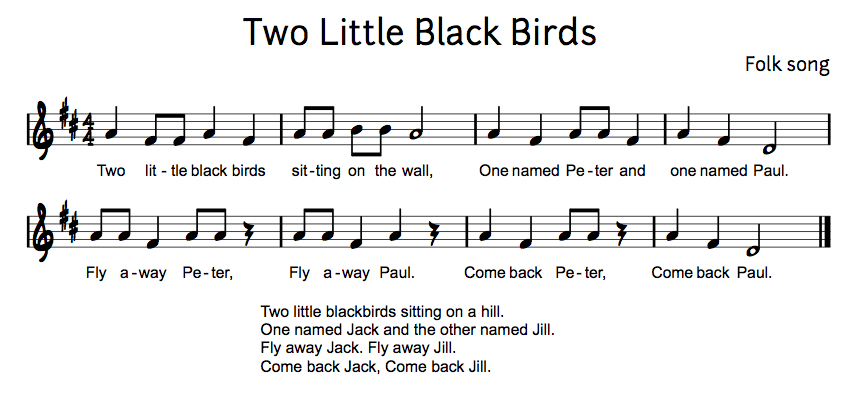 This species differs from its relatives in the following external data:
This species differs from its relatives in the following external data:
- brownish green on back;
- auburn sides;
- gray-white belly, which is covered with numerous spots of light and dark color;
- at the tips of the wings there is a fringing of red feathers;
- a characteristic white eyebrow can be seen above the eyes.
Deryaba
Lives mainly in Central Europe and is the largest representative of the thrush family. Prefers to settle in gardens, groves, coniferous forests, parks and shrubs. The main diet is mistletoe, mountain ash, blackthorn and yew. A favorite delicacy are earthworms, fruit pulp and small insects that live in the soil. nine0003
Deryaba can be recognized by its white belly with small spots along its entire perimeter and white wings along their lower base. At the same time, the back has a grayish-brown tint, and the tail of the mist is rather elongated.
Wood Thrush
This is the smallest member of the Thrush order. Another name for this species is the white-throated thrush. Settles in mixed, sometimes coniferous forests located on the slopes of hills. The plumage of the bird has a rather catchy color. Males have a brighter feather color than females. On the head and shoulders of the male there is always a blue-blue color of feathers, white blotches are visible on the wings. nine0003
Another name for this species is the white-throated thrush. Settles in mixed, sometimes coniferous forests located on the slopes of hills. The plumage of the bird has a rather catchy color. Males have a brighter feather color than females. On the head and shoulders of the male there is always a blue-blue color of feathers, white blotches are visible on the wings. nine0003
A small white spot flaunts on the throat of the forest thrush, thanks to which the bird was called white-throated. The chest and neck are painted bright red, and the lower part of the abdomen is light red. The singing of the handsome forest man also deserves attention. His songs are often sad, but they also have solemn notes with colorful flute whistles.
Shama Thrush
Prefers to settle in dense thickets of India and Southeast Asia . Males are distinguished by black plumage, a chestnut belly and a white outer side of the tail. The females are more gray in color. The beak of this representative of the species is completely black, and the legs are bright pink.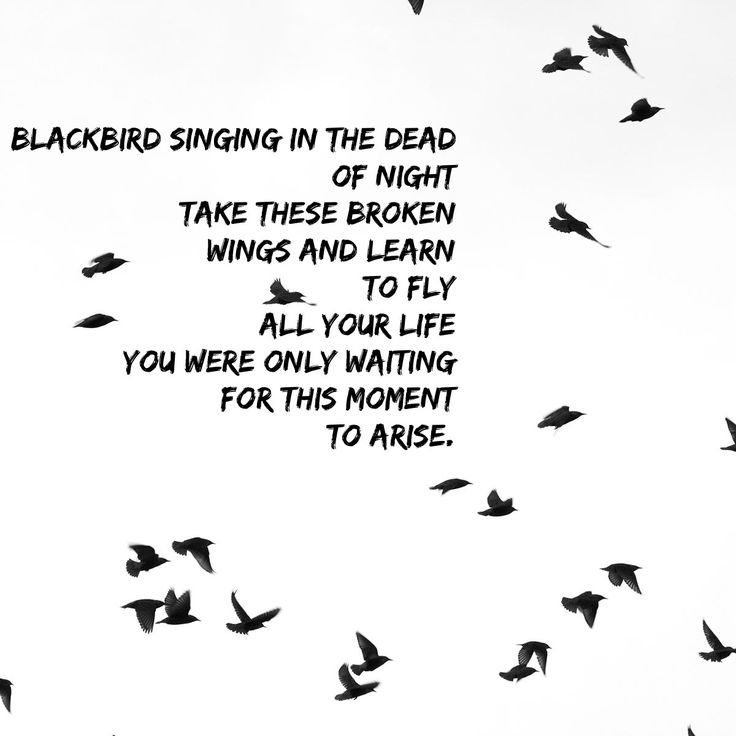 nine0003
nine0003
Unlike its counterparts, the shama thrush does not like to eat berries and fruits, but prefers a more high-calorie diet consisting of beetles, worms, cockroaches, grasshoppers, dragonflies and butterflies.
The bird is ideal for keeping in aviaries or in cages, as it quickly gets used to the conditions of its habitat and human presence. They prefer to have it for listening to amazing and reverent singing, which is very diverse in its performance. nine0003
The male is recognizable by its characteristic grey-bluish back, light belly and brown paws. In females, an olive-brown hue of the abdomen with reddish sides predominates. The throat is abundantly covered with variegated spots. These representatives prefer to settle in areas of South Asia from Pakistan to Nepal. Seasonal migrations of these birds extend to the shores of Central Europe.
Traveling Thrush
Prefer to settle throughout the gardens and parks of North America. Recently, these representatives began to actively settle in certain European countries. The back, head, tail and wings are black or gray-dark in color, while the chest and belly are highlighted with red-orange hues. The throat and eyes have white patches. A favorite delicacy are various types of butterflies, beetles and ants. During the berry ripening season, they prefer to consume cherries, sweet cherries, sumac, blackberries and raspberries. nine0003
The back, head, tail and wings are black or gray-dark in color, while the chest and belly are highlighted with red-orange hues. The throat and eyes have white patches. A favorite delicacy are various types of butterflies, beetles and ants. During the berry ripening season, they prefer to consume cherries, sweet cherries, sumac, blackberries and raspberries. nine0003
Which thrush to choose?
Among the many varieties of thrushes, the songbird and the black one can please with pleasant singing. Fieldfare can be found in a cage much less often, since it does not have a melodious voice, but it is much more beautiful than other species. Only male thrushes sing.
Song Thrush is a small bird. Its head, back and tail are brown-brown, sometimes with an olive tint, coloring. The abdomen is white, the chest is yellowish, and dotted with variegated brown dots. Wings yellow below. nine0003
The blackbird is larger than the songbird. Its coloring justifies the name - completely black with a yellow-orange beak in the spring. Although young birds are more similar in color to the song thrush. He sings quieter, but his whistling sounds are distinguished by purity and beauty.
Although young birds are more similar in color to the song thrush. He sings quieter, but his whistling sounds are distinguished by purity and beauty.
Fieldfare has a two-color upper body: the head and rump are gray, and the back is brown. Very bright speckles against an ocher-yellow chest. Fieldfare is the hardiest thrush in captivity, the most unpretentious, it gets used to humans better than others. nine0003
If you are buying a bird for a child, let him choose the one he likes.
How to care for a bird?
Thrushes feel good in captivity: they quickly get used to the cage, sing in the daytime and in the evening, and can even breed. The only inconvenience is that a thrush needs a fairly spacious cage, since in the wild it feeds and spends a lot of time on the ground. Therefore, for this bird to live, its own house is more suitable, and not an apartment.
Thrush, raised in captivity, sings earlier than usual. His singing is quite loud, so in the summer it is better to take the cage with the bird out into the yard. In addition, in open space, the bird feels more familiar.
In addition, in open space, the bird feels more familiar.
Thrushes love to swim. The water container should be placed directly in the cage. But, at the same time, it should be borne in mind that the water will spill. Place the cage in such a way that it does not create inconvenience.
“Domestic” thrushes are not picky about food. You can feed with bread moistened with milk, flour worms, nightingale food. You can also give wheat or rice porridge. Thrushes love berries, so don't deny your pet vitamins. Grapes, apples, mountain ash should be included in his diet. Thrush's favorite treats are earthworms, snails and slugs. If it is possible to get them, it will be better than artificial substitutes. nine0003
Do not forget that the thrush is, first of all, a wild bird. Therefore, he needs conditions for physical development. It is necessary to let the pet fly, but indoors so that it does not fly away. Two perches should be fixed in the cage, preferably at different levels, in order to provide the bird with movement.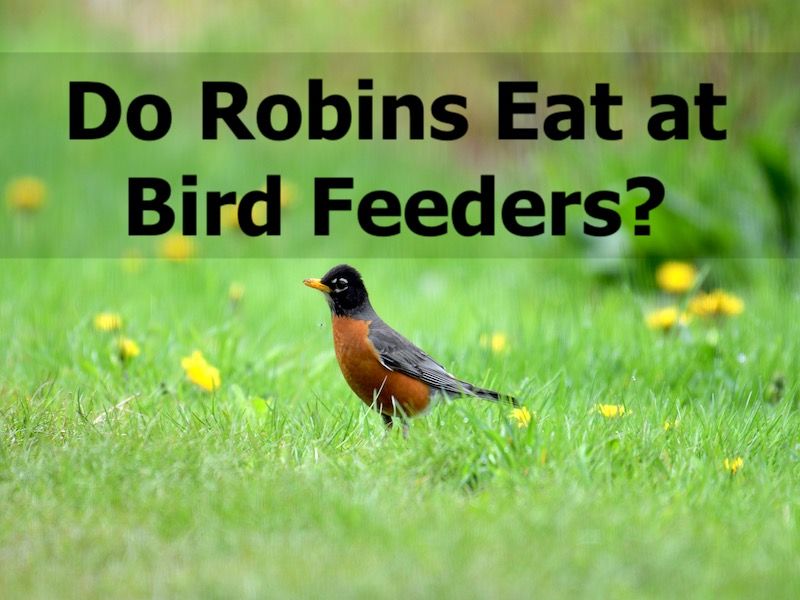
And don't forget about the cleanliness of the cage, dirt and bad smell will cause inconvenience, first of all, to yourself. It is better to make a cage from wood, it is safe for the bird and practical for you. nine0003
Advantages and disadvantages of poultry in the house
Unlike a cat or a dog, a bird has a permanent home. This makes it easier to care for her and does not cause trouble in the form of dirt and wool.
Melodious singing of a thrush has a positive effect on the human nervous system, providing a calming effect. Melodies with birdsong are often used in meditation in psychotherapy.
Birds are less whimsical to the conditions of keeping and do not require large financial costs. nine0003
But rather loud singing of the thrush is more of an advantage than a disadvantage. But, if this creates discomfort, just take the cage out into the yard or to another room.
Feathered friend
Despite the fact that the thrush is a wild bird, it is quite easy to tame it.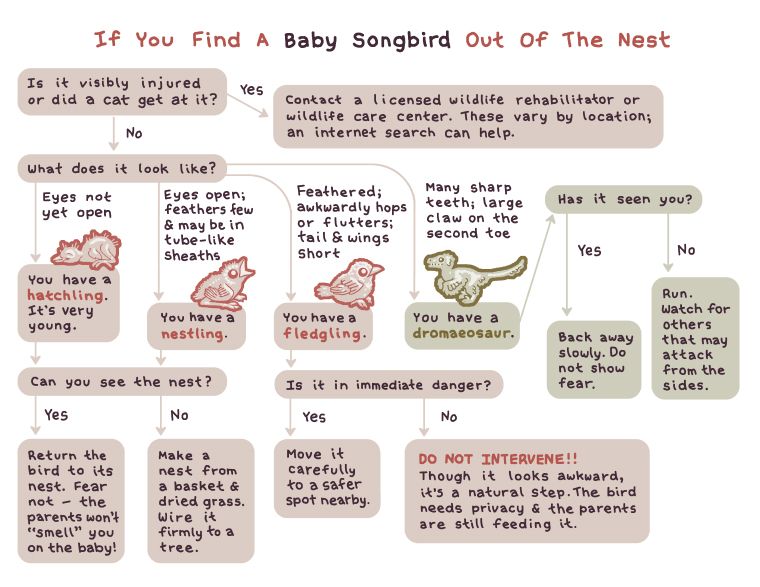 He will become a good friend to your child, even a small one, because he will not scratch or bite.
He will become a good friend to your child, even a small one, because he will not scratch or bite.
If you teach a child to take care of a bird, the child will develop a sense of responsibility. Show him how and what to feed his feathered friend. Let the child participate in the preparation of food. Cleaning up after a bird is also not difficult. nine0003
When a thrush flies freely around the room, explain to a small child that it is not a toy, but a living being, and should not be hurt. The kid, thus, will learn to empathize and love animals. Watching a bird, the child also develops attention and perception.
Thrushes get along well with people, remember and repeat some sounds. It will be interesting for the child to play and even talk with his feathered friend. However, he should explain that birds do not live as long as people, so that the death of a pet does not become a tragedy for the child. nine0003
And remember: a child who has learned to truly love animals will never harm a person.
Best regards, Irina.
Related articles
Decided to get aquarium fish? And don't know where to start? Then check out some helpful tips and tricks. Fish are the most unpretentious pets. They will not wake you up at night, do not require you to “walk” yourself and have a lot of other advantages. So where to start? The very first thing is to decide on an aquarium. In any specialized store offer a lot of different options. For beginners, the best option is 30-60 liters. It is quite stable, has a decorative look, which will perfectly fit into the home interior. In order to constantly get oxygen into the aquarium..
Hello dear ZOOchef readers! I am madly in love with animals. Someone always lived in my family: first a cat, then hamsters, a parrot, again a cat, then two more cats, a lot of rabbits, about 10 dogs, a turtle, a guinea pig, aquarium snails and a rat. Now I am 26 years old and do not keep animals at the moment. I now have my own family and a small child who will soon be asking for permission to have a pet, so now I’m already starting to read various articles on websites in search of the perfect option so that both the child will be pleased and we are comfortable, because in my case . .
.
A pond in a summer cottage or in the yard of a country house is a wonderful decoration! Many species of fish, even decorative ones, can live in this small artificial reservoir. In order for the inhabitants of the pond to be truly comfortable, you will need to create all the conditions for this - take care of saturating the water with oxygen, calculate the optimal area and depth of the reservoir. Do-it-yourself pond For breeding ornamental fish in a pond, it is necessary that its area be at least twenty square meters, and the depth should be at least one to one and a half meters. If you want the fish to spend the winter in the pond,...
CARTOATS is a very large family of fish, which includes almost 50 genera and over 500 species. Tooth carp are unpretentious to the conditions of detention, they are easy to breed. They live mainly in fresh water, but some species prefer brackish and marine tropical and subtropical waters of America. About 230 species can be found in this region, as well as many varieties found in Africa (257 species). In many representatives of this species, eggs can develop with a delay, that is, they do not die during the dry season, they tolerate drying well. They keep apart, do not gather in flocks ..
In many representatives of this species, eggs can develop with a delay, that is, they do not die during the dry season, they tolerate drying well. They keep apart, do not gather in flocks ..
Dedicated to people who decide to have fish! Before you buy aquarium fish, you need to learn more about them. Which species take root better, what kind of food they need, what size aquarium they need and much more. Consider several families of fish. The first family is carp, it is currently the most common. This is easily explained, because they are very easy to keep in aquariums and they have little to no aggression, therefore, they can coexist with other species. The brightest, in the literal and figurative sense, representatives of this ..
Cute little creatures swarming in the aquarium attract the attention of even people who are cold towards animals. Caring for pets makes us kinder and more tolerant, allows us to better understand their problems and worries, to be alone with nature. That is why families with children are recommended to have cats, dogs, hamsters or parrots, so that the child learns responsibility from an early age by caring for his friend. But our daughter asked us to give her an aquarium with fish for her birthday. On the one hand, my husband and I were glad that the child showed a desire to take care of someone, but on the other hand, he was..
That is why families with children are recommended to have cats, dogs, hamsters or parrots, so that the child learns responsibility from an early age by caring for his friend. But our daughter asked us to give her an aquarium with fish for her birthday. On the one hand, my husband and I were glad that the child showed a desire to take care of someone, but on the other hand, he was..
Aquarium fish please the eyes and calm the nerves, looking at them you forget about problems and worries. Only now it seems to many that it is very difficult to take care of these charming creatures, you need to learn a lot about the arrangement of an aquarium, all the necessary fixtures and varieties of algae. For beginner aquarists, it is best to acquire less whimsical fish, which have enough clean water for a normal existence. After communicating with them, the necessary experience will appear, which can be applied when keeping more capricious marine life. Today there are no special pr..
Grade: birds.
Squad: passeriformes.
Family: thrush.
Type: thrushes.
Natural habitat: in nature there are more than 60 species of birds of this genus, living mainly in Europe, Asia and America. Thrushes prefer to settle in deciduous or coniferous forests, and only a few species can live on the plains. There are 15 species of thrushes in Russia. Thrushes are migratory birds wintering in warm countries. nine0205 Life expectancy: under 17 years old.
Averages: body length 20-25cm. Weight 55-100g.
Description
Thrushes are terrestrial and arboreal birds with a slender, elongated body and a thin, strong, slightly curved beak. Wings of moderate length, with slightly pointed apices. The tail is of various lengths, but is never very short. The plumage can be both tight-fitting and loose. The coloration is varied and depends on the species. Plumage color can be as modest (singing thrush) or bright (rock thrush). In many species, the color of the female differs from that of the male, and the males are slightly larger than the females. Thrushes molt in July-August. nine0003
In many species, the color of the female differs from that of the male, and the males are slightly larger than the females. Thrushes molt in July-August. nine0003
Character
Thrushes are distrustful, nervous and shy birds, although you can often meet calm individuals with a balanced character. They are also restless, smart and active. At home, bird lovers usually keep the song thrush, although among the best singers living in the forests of Russia, one can name the black and gray thrush, as well as very elegant and vocal birds from the group of stone thrushes.
Relationships with other pets
Thrushes can live in the same enclosure with other songbirds. These birds are not recommended to start in families where there are other animals. The presence of a cat or dog, the sound of their voice, can cause severe stress in the bird. In addition, cats and dogs will view the bird as their prey. Free range rats can be dangerous to birds. When kept in a garden enclosure, large wild birds (magpies, crows) can be dangerous for thrushes.
Attitude towards children
Thrushes can be of interest to older children who love birds, who can not only communicate, but also take care of a feathered pet. nine0003
Taming
To tame a thrush, to overcome its natural incredulity, you need a lot of patience, knowledge and love for picky pets. The chicks that were fed in the house are more likely to become tame. It is extremely rare to tame adult birds.
Power
Thrushes are voracious birds and need a lot of food. The basis of the diet of thrushes kept in captivity is soft food, including grated carrots with crushed white crackers, cottage cheese, crushed sunflower seeds, hamarus, crushed hemp, chopped or grated hard-boiled chicken eggs, dry or better fresh ant pupae, thinly chopped pieces of raw or boiled meat, etc. Carrots should make up about half of the mixture by volume, the ratio of the remaining components is determined by the species and individual characteristics of the pets. The mixture should be loose but not sticky to your hands or beak. Cottage cheese should be fresh and fresh. In the feed, along with carrots, you can gradually add finely chopped dandelion greens, and in winter put a pinch of herbal flour. Thrushes also willingly eat berries of mountain ash, elderberry, turf, bird cherry, horticultural crops, apples, earthworms, slugs and naked caterpillars. During periods of molting and intense singing, the protein part of the diet should be increased by mealworms and raw meat. nine0003
The mixture should be loose but not sticky to your hands or beak. Cottage cheese should be fresh and fresh. In the feed, along with carrots, you can gradually add finely chopped dandelion greens, and in winter put a pinch of herbal flour. Thrushes also willingly eat berries of mountain ash, elderberry, turf, bird cherry, horticultural crops, apples, earthworms, slugs and naked caterpillars. During periods of molting and intense singing, the protein part of the diet should be increased by mealworms and raw meat. nine0003
Care and maintenance
To keep a thrush at home, a spacious wooden cage with bamboo rods is required, the minimum size of which is 80cm x 30cm x 40cm, where 80cm is the length of the cage, but it is better to choose a larger cage, since in nature the thrush feeds by running on the ground. It is advisable to choose a cage with a deep tray, separated from the "living" room by a grate. The presence of a pallet makes it easier to clean the cage, allowing you not to disturb the bird. In addition, the birds will not be able to get food contaminated with droppings from the pan (eating such food leads to gastrointestinal disorders). On the front side of the cage, it is desirable to install a side made of transparent plastic 8 cm high so that debris, water and food do not fall out of the cage. Experienced thrush owners often leave the cage semi-covered with light material, which allows thrushes to hide behind the material if they are frightened by something. A cage with a thrush is placed in a bright place on a special stand or bedside table away from drafts. From spring to late autumn, it is better to keep thrushes in the air, because they need sunlight, shading part of the cage in hot weather. It is necessary to install at least two or three perches in the cage, and one should be installed above the others, the thrush will sing on it. The cage should be equipped with a retractable feeder, preferably a floor, hanging drinker and bathing bowl. A bathing suit is convenient, which is attached to the opening of the open end door.
In addition, the birds will not be able to get food contaminated with droppings from the pan (eating such food leads to gastrointestinal disorders). On the front side of the cage, it is desirable to install a side made of transparent plastic 8 cm high so that debris, water and food do not fall out of the cage. Experienced thrush owners often leave the cage semi-covered with light material, which allows thrushes to hide behind the material if they are frightened by something. A cage with a thrush is placed in a bright place on a special stand or bedside table away from drafts. From spring to late autumn, it is better to keep thrushes in the air, because they need sunlight, shading part of the cage in hot weather. It is necessary to install at least two or three perches in the cage, and one should be installed above the others, the thrush will sing on it. The cage should be equipped with a retractable feeder, preferably a floor, hanging drinker and bathing bowl. A bathing suit is convenient, which is attached to the opening of the open end door. After bathing, the bathing suit should be removed immediately. In the summer, a bathing suit can be placed in a cage two or three times a day. Bowls and drinking bowls are washed daily with hot water and wiped dry with a towel. As a bedding, you can use crumbly peat or small sawdust, which absorb the liquid fraction of the litter well. The litter is changed as needed, once a month the cage is completely cleaned with a brush, disinfected and then thoroughly washed with hot water. Thrushes are migratory birds and twice a year - in spring and autumn - they fly at night to warmer climes. Thrushes contained in the cage during this period are restless at night, jumping from perch to perch or from perch to the floor of the cage. The noise from the movements of the bird will be quite strong and can interfere with sleep. Keeping a song thrush is not difficult for those who have already had the experience of keeping insectivorous songbirds. nine0003
After bathing, the bathing suit should be removed immediately. In the summer, a bathing suit can be placed in a cage two or three times a day. Bowls and drinking bowls are washed daily with hot water and wiped dry with a towel. As a bedding, you can use crumbly peat or small sawdust, which absorb the liquid fraction of the litter well. The litter is changed as needed, once a month the cage is completely cleaned with a brush, disinfected and then thoroughly washed with hot water. Thrushes are migratory birds and twice a year - in spring and autumn - they fly at night to warmer climes. Thrushes contained in the cage during this period are restless at night, jumping from perch to perch or from perch to the floor of the cage. The noise from the movements of the bird will be quite strong and can interfere with sleep. Keeping a song thrush is not difficult for those who have already had the experience of keeping insectivorous songbirds. nine0003
Interesting
Among lovers of songbirds, disputes about who sings better than a nightingale or a thrush still do not subside, because the real song of a thrush can be confused with a nightingale.
If you take a very small chick into the house and feed it by hand, then its song may be poorer than that of a bird caught at a young age in nature.
Thrushes are insectivorous birds. Nests are built mainly in a young mixed or coniferous sparse forest with dense undergrowth near water and fields. Their "dwelling" is bowl-shaped, collected from grass stalks, small branches, moss, sealed with saliva. It is located on a tree, and not high from the ground. nine0003
Both parents incubate the clutch. Birds feed mainly on the ground, looking for insects in the forest floor. They are also heated to plumage together. Thrushes bring several insects to their chicks on average 4 times per hour. Food is collected close to the nest, at a distance of no more than 200 m. thrush. The photo shows the baby well. You need to immediately decide what you will do with him: leave him to live in the house or release him into the wild. It should be noted that if the chick is very small (it has fluff on its head), and you pick it up, then an adult bird will be completely tame. nine0003
nine0003
The main difficulty in raising a baby is to provide him with warmth. Thrush chick should be kept in captivity at a temperature of about 40 o C. To do this, you need to make a simple thermostat. You can use a plywood box, and it is preferable to make a small wall at the bottom, and the opposite will be a lid. At the bottom of the sidewall, strengthen the cartridge and screw in the light bulb. Fill it with sand 5 cm and install a nest. It can be built from rags or found natural. It is unacceptable to use cotton wool, as the thrush chick will get entangled in it. nine0003
To be sure that overheating from the light bulb does not occur, you will have to install an incandescent rheostat or thermometer on the surface of the sand. In the first version, the light bulb can not be turned off, and in the second one, you will have to periodically monitor the readings and turn it off when heated to 41 ° C. A fledgling thrush chick will not tolerate overheating, as well as hypothermia, it will die. Fledgling birds do not need heating, they can live in a basket with a lid.
Fledgling birds do not need heating, they can live in a basket with a lid.
If the chick was taken from the nest, then the first feeding in the house should be in 5 hours, because. he will need time to adapt. It is better to feed babies found outside their natural habitation immediately, because it is not known how long they are starving. Relatively large cubs have to be forced to eat, they do not open their mouths voluntarily. Food must be pushed further down the throat, otherwise it will be spit out. Before force-feeding, you can resort to tricks - knock on the basket or move it. This will improvise the arrival of the mother, and perhaps the thrush chick will open its mouth. Usually, when hungry, he makes sounds, demanding food. It must be given as soon as possible. Babies get used to people quickly, after the 3rd feeding they themselves open their mouths wide. nine0003
The question arises whether the thrush. Given that these birds are insectivorous, the answer suggests itself: flies, moths, zofobas, etc.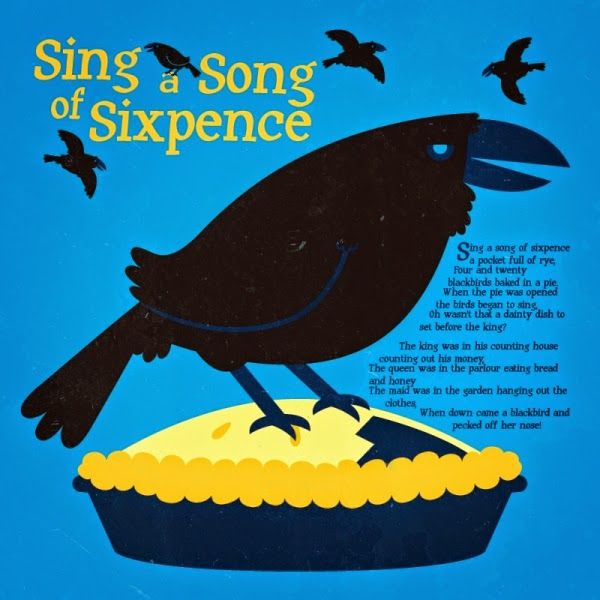
Feeds for insectivores low in iron and vitamin C may be used as they accumulate in the liver and adversely affect development. It is recommended to give him boiled potatoes and corn, apples, melons, berries, banana, pear, yogurt. Raisins, grapes, kiwi, strawberries, citrus fruits, green vegetables, tomatoes, egg yolk, red meat, liver are contraindicated. nine0003
Thrush chick is gluttonous, it needs to be fed every hour, in extreme cases - two. You can use tweezers with blunt ends. Before going to bed, it is advisable to place a basket with a chick near the bed in order to hear a squeak indicating the need for feeding. You have to get up, otherwise the baby will die of hunger.
In hot weather, the chicks need to pour water from a pipette. In crushed eggshell, which is essential for bones, pieces of food can be rolled before feeding. Even the chicks need sand, without it the food stagnates in the stomach, and death may occur. nine0003
When the thrush chick grows up, it needs to be taught to peck food on its own.